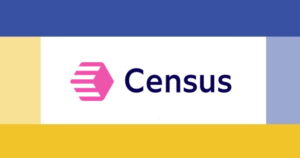An Intellyx Brain Candy Brief
Most organizations treat moving data from data warehouses (or other data systems of record) into analytics or BI tools, or business applications like Salesforce as an API-centric integration (and often a data transformation) challenge.
 Census takes a different approach. Census enables anyone in the organization to synch data from data systems of record into any business application of choice as simply as setting up the rules for synching address books on a phone.
Census takes a different approach. Census enables anyone in the organization to synch data from data systems of record into any business application of choice as simply as setting up the rules for synching address books on a phone.
Census supports business rules that constrain the flow of data and seamlessly handles basic issues like avoiding duplicates and controlling the deletion of data. Census also allows for straightforward testing of synching rules before deployment.
Customers don’t store data in Census. Instead, Census leverages the customer’s data store of choice for its own metadata schemas, thus supporting the customer’s data locality restrictions as well as enabling organizations to leverage Census to manage Census metadata.
Customers set their own synching schedules (typically on the order of hourly), but Census supports synching cycles of as little as one minute, which is well below the data latency of most data warehouses.
Copyright © Intellyx LLC. Intellyx publishes the Cloud-Native Computing poster, advises companies on their digital transformation initiatives, and helps vendors communicate their agility stories. As of the time of writing, none of the organizations mentioned in this article is an Intellyx customer. To be considered for a Brain Candy article, email us at pr@intellyx.com.



